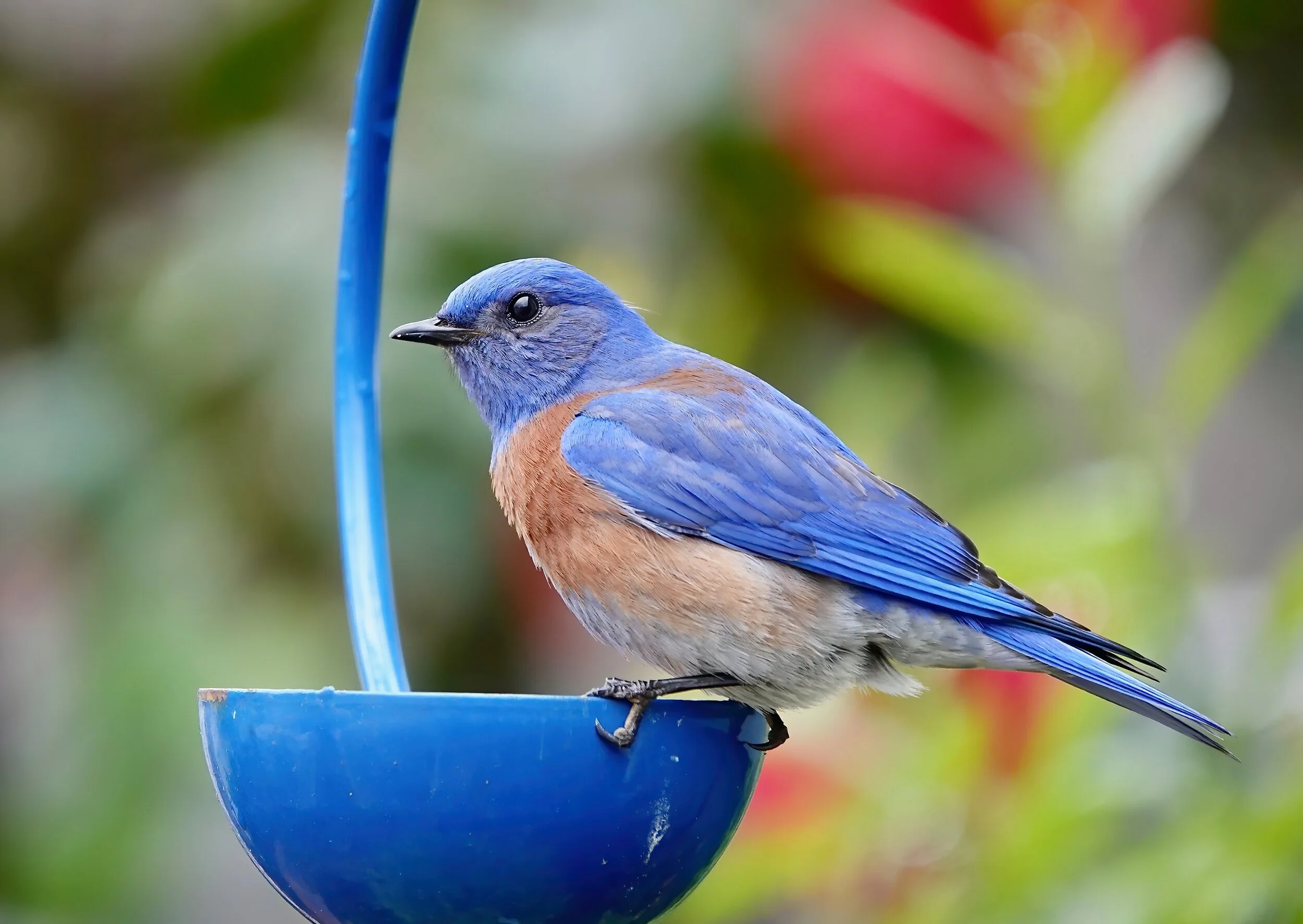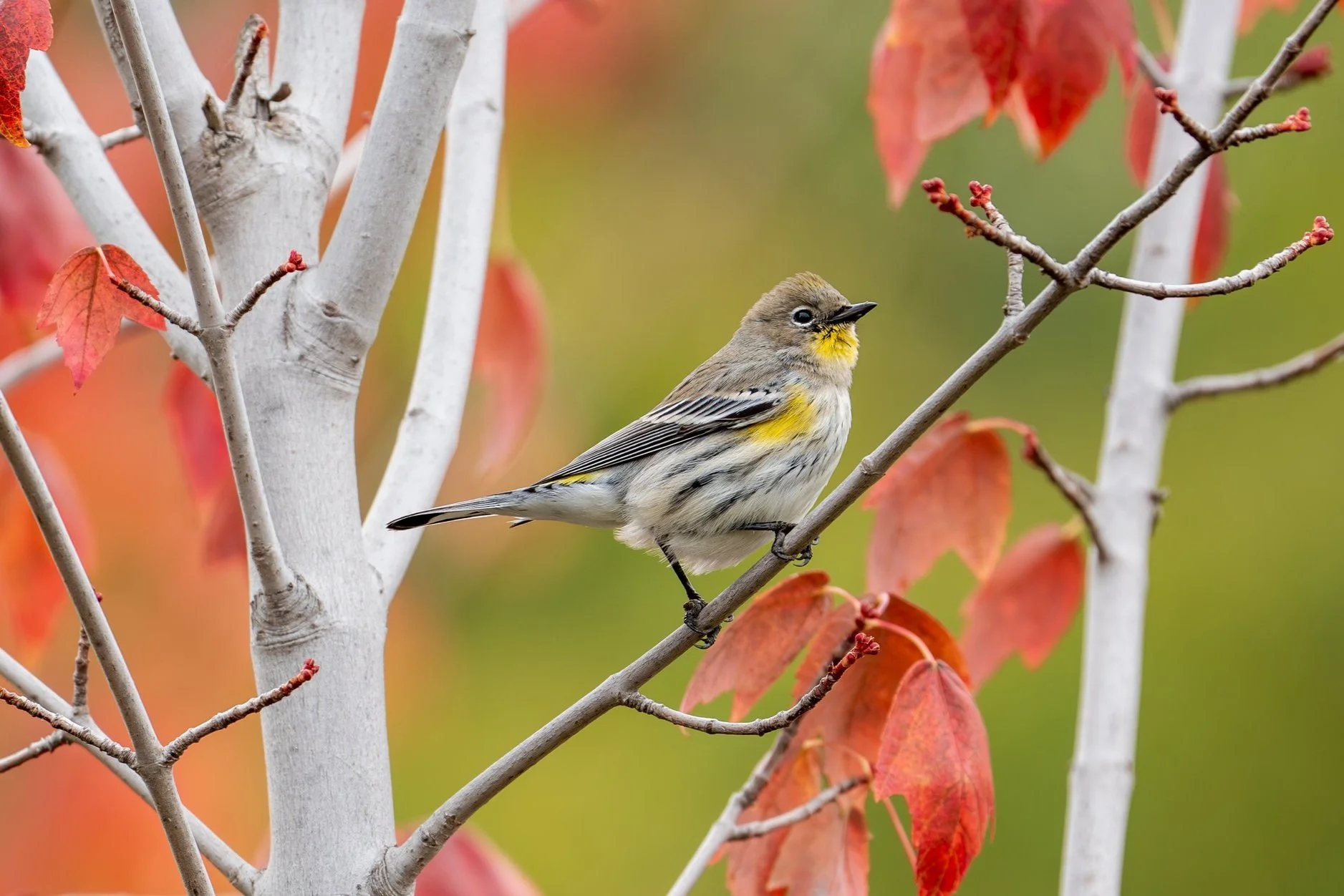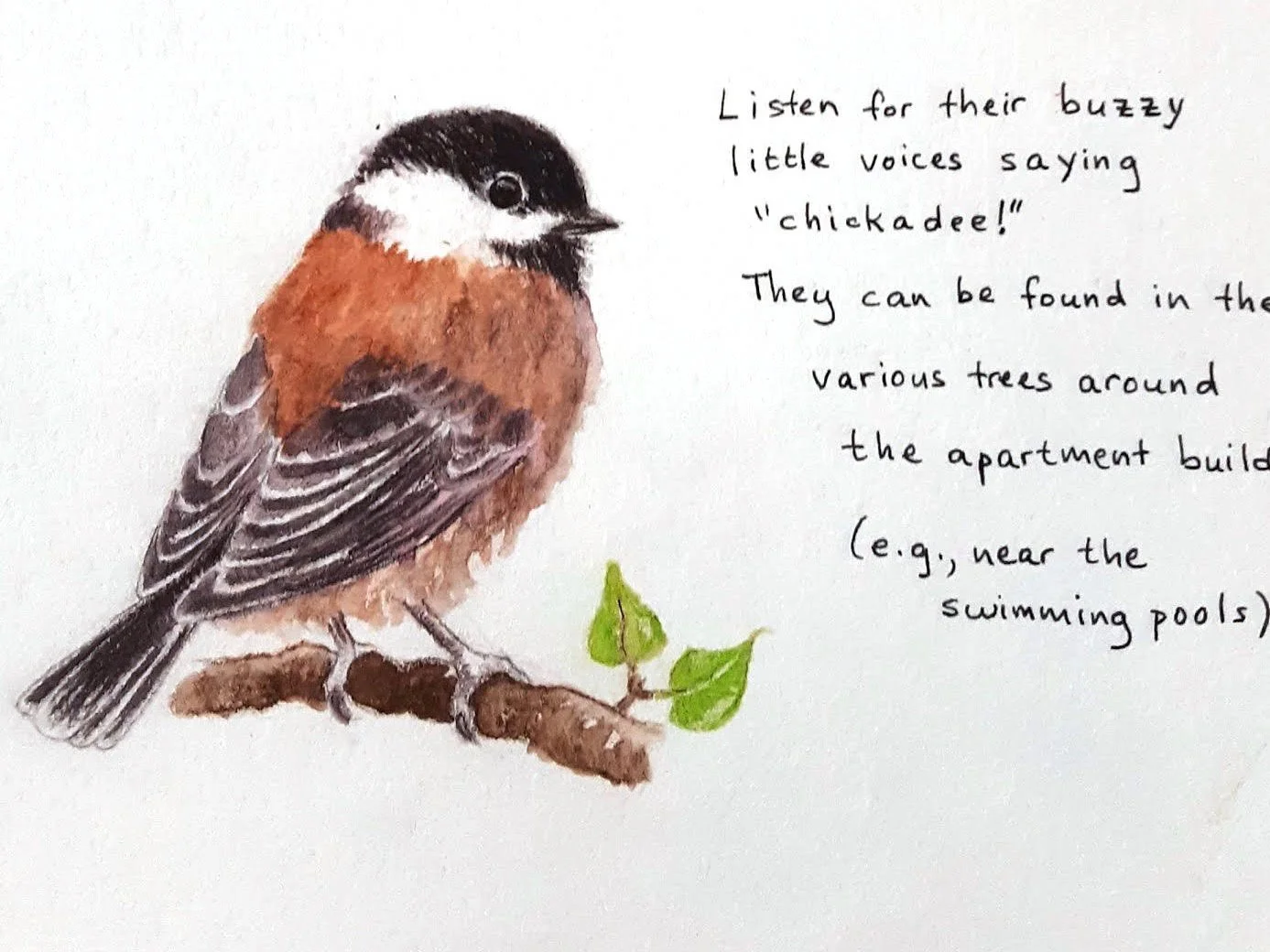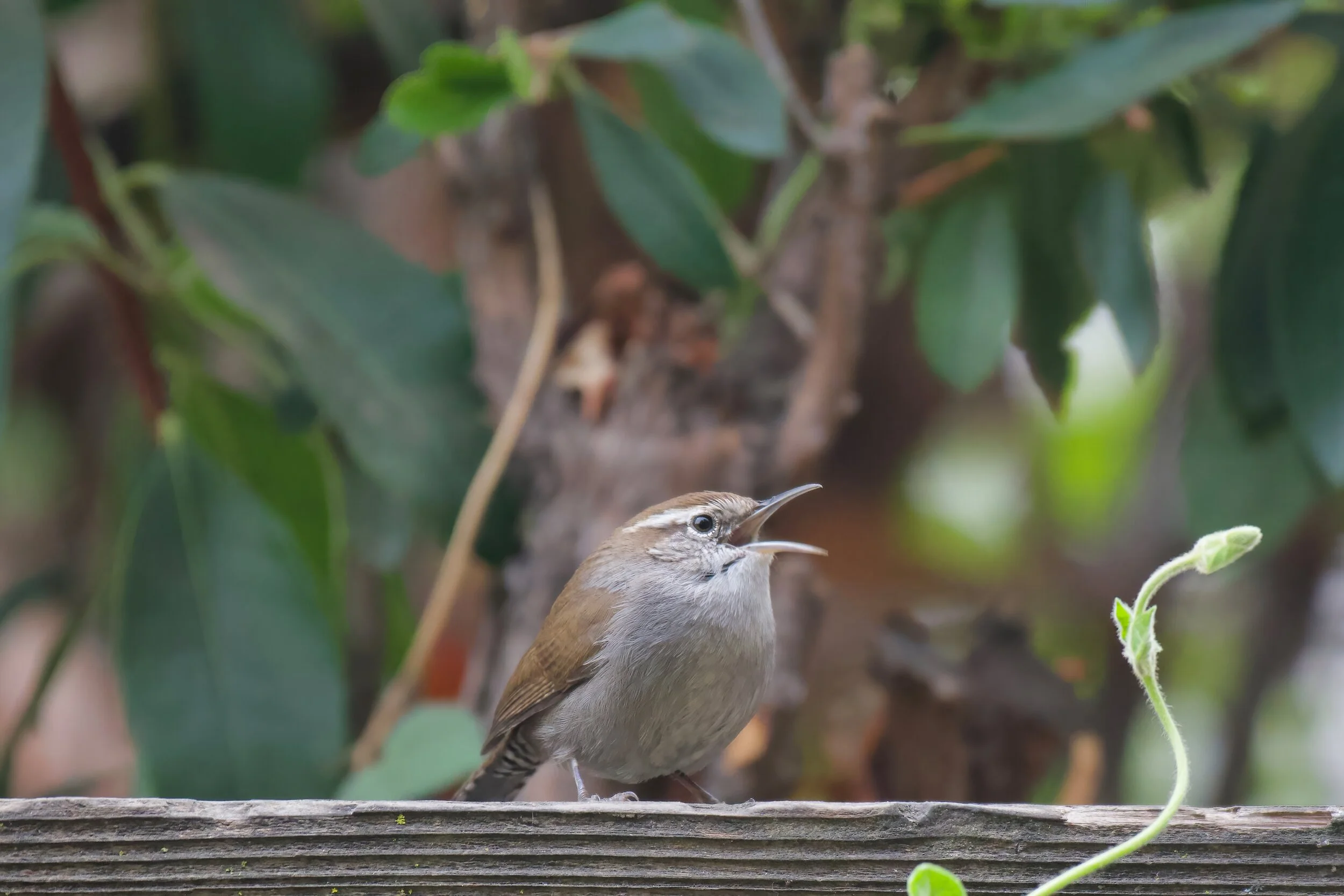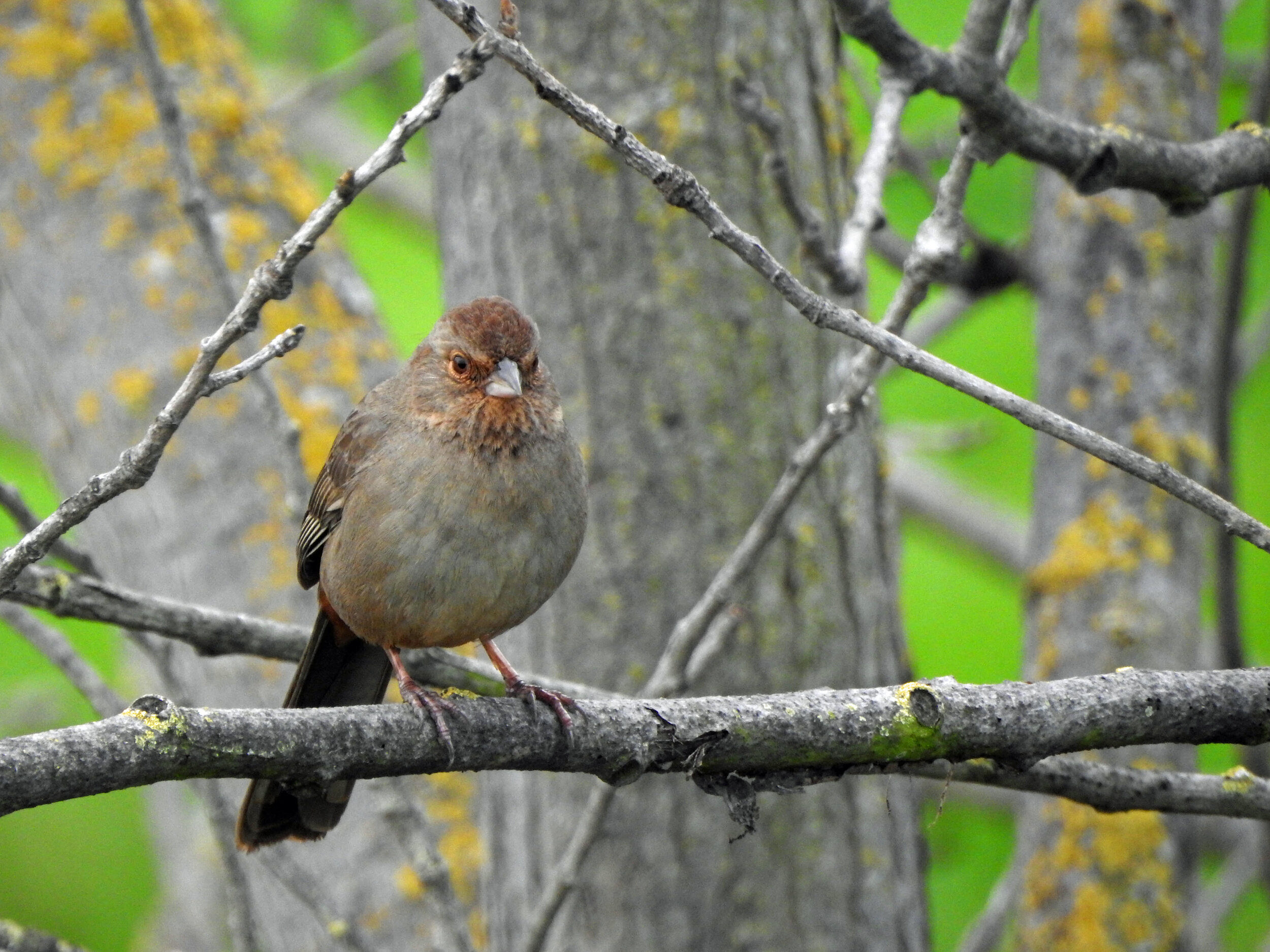FEATURED Posts
Blog Series
Learn Your Santa Clara County Birds
American Robin by Hita Bambhania-Modha
COUNT BIRDS AT HOME FOR SCIENCE
Every winter, the Cornell Lab of Ornithology sponsors Project FeederWatch, a citizen science project about the birds we see each day.
From November to April, count the birds that show up at your home and submit your counts to the Lab online. You can count birds in your yard or birds you see from your window, wherever you live. Start anytime during the season and create your own count schedule - it’s fun and easy!
Learn more about FeederWatch in our Winter 2021 Avocet interview with the Cornell Lab and sign up here.
Juvenile Western Bluebirds enjoying meal worms. SCVAS volunteer Carter Gasiorowski (San Jose)
Bird Feeding
Bird feeding is one of the easiest ways to bring birds to your yard, patio, or balcony. SCVBA Education Specialist Carolyn Knight covers common bird feeders and other aspects of having a feeder in the video Birding Basics: Feeders.
Or read “All About Bird Feeders” to learn what type of feeder is best for you, where to place your feeders, and what seed to use.
The SCVBA Nature Shop and the Los Gatos Birdwatcher have a wide selection of feeders and bird food, and can help you make the right choice.
Feeder birds are susceptible to disease, and keeping your feeders and bird baths clean is key to reducing disease transmission. See the FAQ on our web page about salmonellosis for the best ways to clean seed and suet feeders, hummingbird feeders, and bird baths.
You should clean feeders and baths regularly, and change bath water daily, regardless of whether you see sick birds. See the FAQ on our page about salmonellosis for details about how often to clean feeders and baths.
If you do see a sick bird at your feeders or baths, take all of these items down for at least a week to allow visiting birds to disperse. Clean the feeders and baths thoroughly before putting them back out.
Salmonellosis Update (5/13/21): There was a serious outbreak of salmonellosis this winter among Pine Siskins and other finches. Please read our post about the disease and how to keep feeder birds safe year-round.
Fox Sparrow visiting a bird bath. SCVAS volunteer Steve Patt (Cupertino)
BIRD HOUSES
All About Backyard Nest Boxes - Information on hanging a nest box in your yard to attract chickadees, titmice, and other cavity nesters.
Nest Box Plans - Buy a nest box in our Nature Shop or learn how to build your own using the plans and details from our Cavity Nesters Recovery Program (CNRP).
Stocking the Pantry (by Lee Pauser) - Help your local birds by providing them with sustenance to survive.
Native Plants and Bird-Friendly backyards
Attract more birds to your backyard by adding native plants. Watch the video Gardening for Birds created by SCVAS Volunteer Ann Hepenstal to get ideas.
Watch our Speaker Series presentation “Wildlife Habitat in your Backyard with Mike Avezedo“ then visit our Backyard Wildlife Habitat Resource page.
California Towhee, a common year-round backyard visitor. SCVAS member Susan Weinstein (Los Gatos)
Read Audubon’s “How to Make Your Yard Bird-Friendly'“
Bird Sanctuary Program - Learn how to create a healthy backyard habitat that is safe for people and pets, plus attractive to birds and other wildlife.
Make Your Home Safe For Birds Brochure - Help reduce window strikes around your home with these simple measures
Tree maintenance guide - City workers and home-owners trim, prune and clear brush in their outdoor spaces, sometimes in the spring and summer when birds are nesting. Read this guide to learn about the best time for tree maintenance for both wildlife and tree health.
Creating a Bird Friendly Habitat in Your Own Backyard - Share how to create a safe haven for birds in you yard in this formatted pamphlet.
California Quail. SCVAS member David Tyra (Morgan Hill)
Protecting Birds from Rodenticides - Calling on governments, businesses, and home-owners to voluntarily cease use of specific rodenticide products deemed by the Environmental Protection Agency to pose "unreasonable" risks to humans, pets, wildlife and the environment.
Bird-Friendly California Plant Guide - Make your yard more bird-friendly with beneficial California native plants.
Tracking what you see
Use eBird, the Cornell Lab of Ornithology’s free database. Sign up for an account at ebird.org and start entering the birds you spot at your feeders. Your data help scientists reveal how birds are affected by environmental changes, trace bird migration, and more. Learn how in this article: Discover the birds in your yard or garden, watch SCVBA Executive Director Matthew Dodder’s video: ASK BirdGuy 09: eBird at Home, or order our free ebird class from our online store.
Participate in the nationwide Great Backyard Bird Count and Project Feeder Watch as part of our citizen science programs to provide scientists with valuable information.
More Resources
For more birding resources including where you can bird in Santa Clara County, visit our Birding Resources page.
Last Updated: 10/16/2021
Banner Photo Credit: Western Bluebird by Carter Gasiorowski

